As an Amazon Associate I earn from qualifying purchases.
A simple recipe for a fish stir fry that works with most fish. Coated in a light batter, the fish is cooked with chiles, garlic, green onions and ginger.
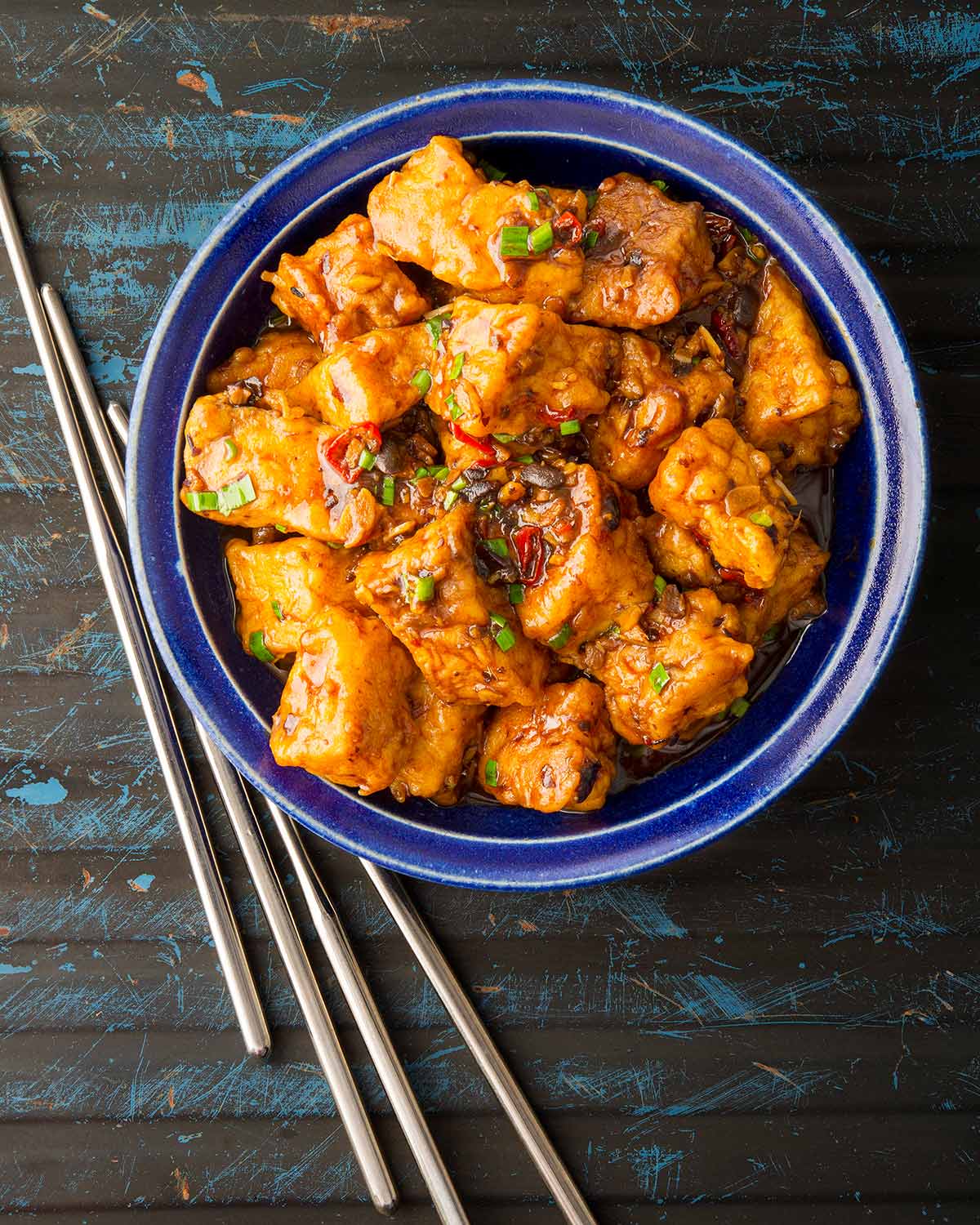
Stir fried fish isn’t overly common in China, or at least I haven’t seen it too much. (China is a big place, after all.) Probably because the violent heat and constant stirring of a stir fry would break up most fish.
Precooking it in a batter solves this problem, and it adds that crispy, crunchy element we all know and love. So that’s what I did.
Most recipes for fish stir fry are Cantonese, which is a lighter, less aggressive cuisine than this recipe, which is inspired by Sichuan cooking. The base of this dish is the combination of flavors called “fish fragrant.”
That means in addition to the Chinese “holy trinity” of garlic, ginger and chiles, there’s chile bean paste, vinegar and Sichuan peppercorns.
Interestingly, “fish fragrant” dishes don’t normally use fish; I have a recipe for fish fragrant pheasant that’s more typical. But figured someone somewhere must be making fish fragrant fish, so why not?
Ingredients
I want to go over a few of the optional Chinese ingredients that will bring your fish stir fry closer to actual Sichuan cooking.
All are available in Asian markets or online, but are rarely seen in “regular” supermarkets. But fear not, you can either skip them or I’ll give you alternates.
- The chile bean paste I use is called pixian; doubanjiang is similar. It’s salty, fermented fava beans and is a common ingredient in Sichuan cuisine. The “black bean paste” you see in supermarkets isn’t the same, but it’ll get you close. Don’t skip this one.
- I use Chinese black vinegar here, but the easier-to-find malt vinegar will get you in the ballpark.
- Finally, Sichuan peppercorns are a cool ingredient that is spicy and numbing. (They take some getting used to if you’ve never had them.) I buy Sichuan peppercorns online. You can skip this if you want.
Side note: You can also buy green Sichuan peppercorns, which are stronger in flavor, and which are often used with fish and seafood. I love them, but beware: the green Sichuan peppercorns fade in flavor within 6 months.
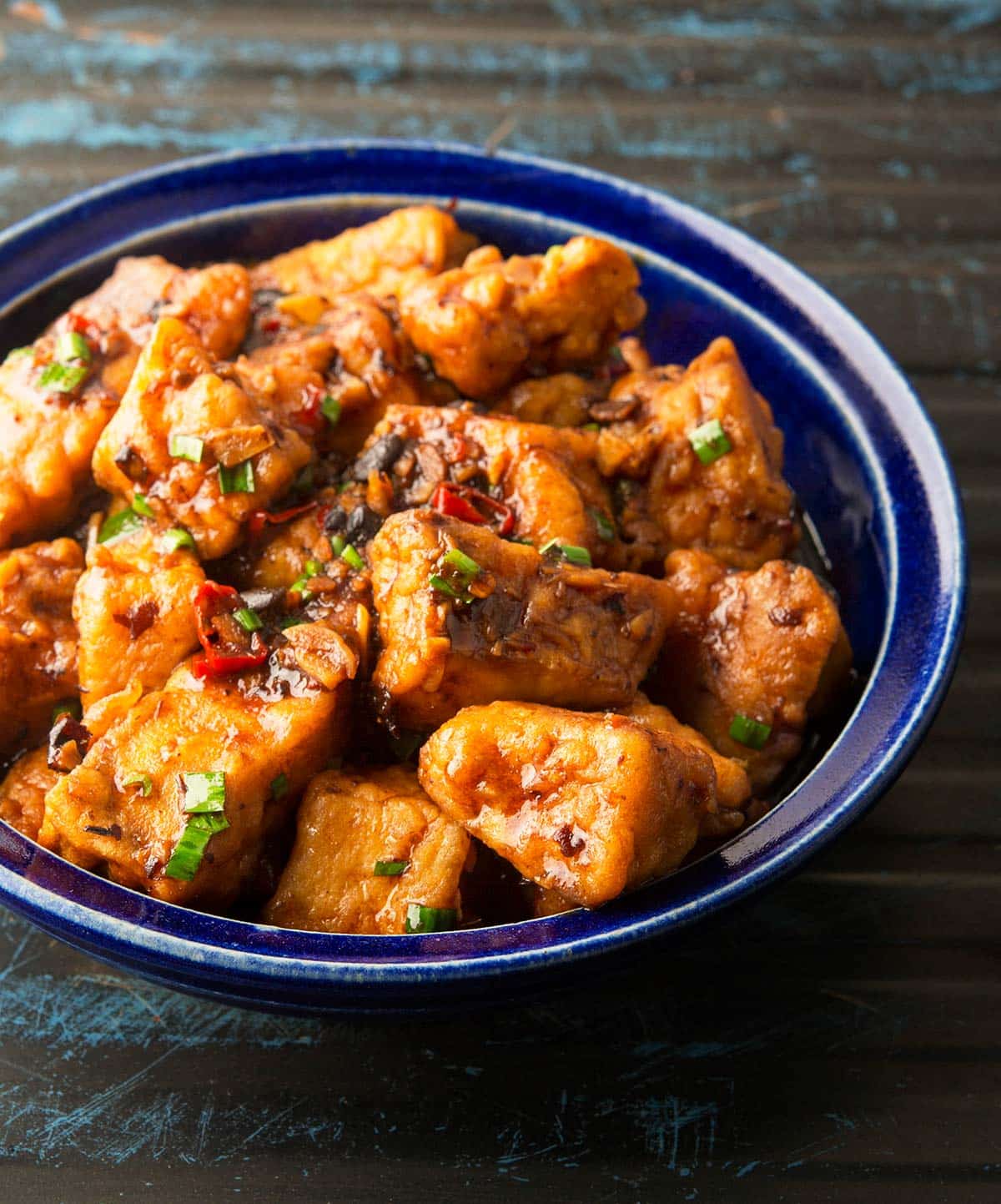
Fish in Fish Stir Fry
I used California halibut here because it’s a fish I catch often. But any firm, white fish works well. Other great saltwater options would be seabass, lingcod, tautog, Pacific rockfish, snapper, grouper, or cobia.
For freshwater, you’ll want a fish you can get nice chunks out of, so catfish, large walleye, burbot, big bass, and, believe it or not, carp and buffalofish are great here because you generally chunk them up to avoid the big bones.
Shrimp, lobster, scallops or even clams would be a nice seafood option.
Serving and Storing
Serve your fish stir fry with steamed rice or all by itself. It does not store well at all, so make it and eat it.
If you want to make this as part of a larger Chinese meal, you can add dishes like Chinese braised mushrooms or scallion pancakes. Another good accompaniment would be Chinese lettuce cups.
If you liked this recipe, please leave a ⭐️⭐️⭐️⭐️⭐️ rating and a comment below; I’d love to hear how everything went. If you’re on Instagram, share a picture and tag me at huntgathercook.
Fish Stir Fry
Ingredients
MARINADE
- 1 pound skinless, boneless fish, cut into chunks
- 4 tablespoons potato, corn or tapioca starch
- 2 egg yolks
- 1 tablespoon soy sauce
- Oil for frying
STIR FRY
- 2 tablespoons minced ginger
- 2 tablespoons minced garlic
- 4 green onions, sliced thin
- 2 to 6 small hot, chiles, sliced (optional)
- 2 tablespoons chile bean paste (pixian or doubanjiang)
- 1/2 teaspoon potato, corn or tapioca starch
- 1/4 cup fish stock, seafood stock or water
- 2 tablespoons black vinegar, or malt vinegar
- 2 teaspoons soy sauce
- 1 teaspoon freshly ground Sichuan peppercorns (optional)
Instructions
- Mix all the marinade ingredients (except for the oil) together in a bowl. Really make sure each piece of fish is coated. Let this sit while you heat the oil up in a wok or pot. You want it at a full 350°F.
- Fry the pieces of fish in batches, using a chopstick or butter knife to separate them as they fry. Fry until golden brown, then drain on a cooling rack set over a baking sheet. Let the oil cool a bit, then pour off all but about 2 or 3 tablespoons.
- If you're not using a wok, move the oil to a big frying pan. Get the oil screaming hot over high heat on your biggest burner. The second it starts to smoke, add the ginger, garlic, green onions and chiles and stir fry about 30 seconds.
- Mix the starch with the stock so you have a slurry.
- Return the fish to the wok and add the bean paste, stock-and-starch mixture and stir fry 1 minute, or until the sauce looks glossy. Add the vinegar, soy sauce and Sichuan peppercorns and toss to combine. Serve at once.
Notes
Nutrition
Nutrition information is automatically calculated, so should only be used as an approximation.


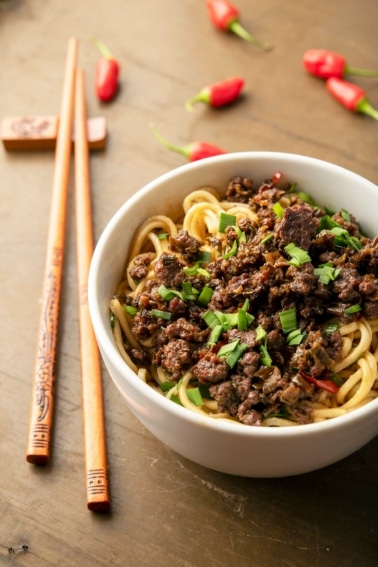

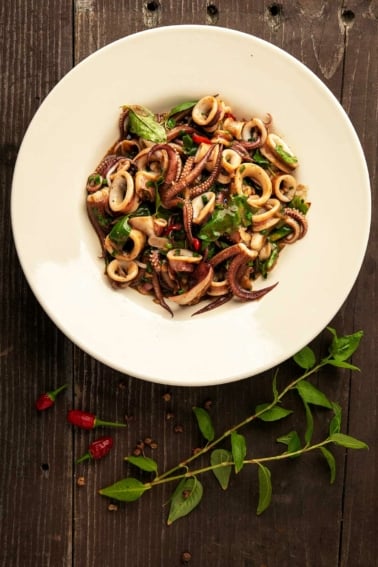
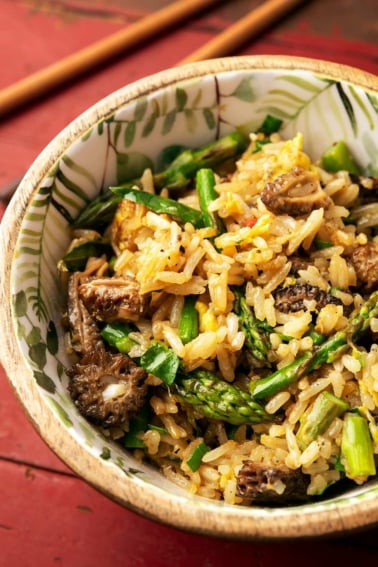
I cooked this recipe for the first time tonight. It took some time to prep but it came together fast once I was underway. I will definitely cook it again. I used a combination of halibut and American paddlefish because that’s what I pulled out of my freezer.
Excellent. Made with halibut. Hanks Asian recipes always wow guest. I could never replicate that Chinese texture and “sauce holding capacity”?on the meat until I started cooking from Hank. If everyone new about these recipes the Chinese restaurants of America might be out of business .
*American Chinese restaurants
This is becoming a favorite, great change from our other fish preps. And it works very well with Mackerel, Spanish or King.
A variation: chunk the fish frozen (bite size) and stir fry them as you would shrimp or chicken.
I love the mouth buzz and long warm heat of peppercorns and made this Sichuan dish with shrimp, subbing with a small Fresno chili and garnished with Thai basil. All went very well until the “holy trinity” of spices hit the hot wok. The resulting vapor cloud of capsaicins caused some tears , respiratory irritation, and expletives from a fleeing spouse. I thought for sure the table fare would be a Flaming Lips experience. HOWEVER, the final product (served over rice) was very true to this style of cooking: savory with a good balance of MODERATE heat/spiciness and undertone of sweetness. Delightfully surprised with the level of peppercorn “numbness” and their piney influence. Although probably too spicy for heat-sensitive palates, I would make this
Sichuan recipe again. Have everything ready at once and make sure an exhaust fan is running when frying the spices; otherwise your eyes may get cauterized. Very Good.
Respectfully submitted.
This recipe might be a good one for freshwater drum (sheepshead, as we call him in the Great Lakes) it’s a firmer meat, then most Great Lakes fish.